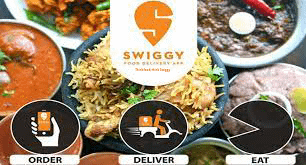The festive season serves as a kaleidoscope to witness the intersection of culture, technology, and marketing. As the festival approaches, we witness a remarkable shift in how companies approach their marketing strategies, revealing deeper truths about consumer psychology and the evolving relationship between brands and cultural celebrations. The festive atmosphere invariably brings a spirit of generosity and indulgence.
Individuals are much more willing to splurge: they enjoy the bright colors of the decorations, festive gatherings, and that thrilled excitement of exchanging gifts. Companies resort to these emotions. They deviate themselves from commercialism and divert themselves toward emotions and tradition. Some companies choose to curate emotional advertisements, while some portray their employees as family and highlight a sense of belongingness. A company weaves its brand story with a festival season, thereby creating an emotional platform for people that is more relatable and relevant.
Chakris to Chatbots: The AI Revolution in Festive Marketing Artificial intelligence is intertwined with our lives so much that it is now inseparable. Brands now are integrating machine learning and LLMs in their campaigns to provide a round-the-clock and personalized service. It is also an amazing tool for forecasting, analyzing, and recording consumer behavior. While most companies use AI assistance in their core operation, some rely upon it for marketing as well. For example, the Diwali campaign of Nestle this year is a perfect example of mixing technology with culture. In today’s digital age, we often lose that personal touch in our communication. Nestlé has addressed this by introducing an AI-powered chatbot that helps you create personalized Diwali greeting cards. With this chatbot, one can generate a unique, heartfelt greeting for your loved ones by simply entering their name. It’s a small but thoughtful way to make sure that even in a digital world, your Diwali wishes to feel personal and genuine.
During the festive season, every brand competes for a chunk in a huge spending pile. They incentivize consumers by offering various discounts and flash sales. Be it Amazon’s Great Indian Festival or Flipkart’s Big Diwali Sale, every company changes its pricing model during this time.
Such discounts unveil the psychology of consumers.
- Quoting the price as “999” instead of “1000”
- Flash Sales or time-bound deals Create an urgency
- Festive offers like “No Cost EMI” that incentivize consumers to spend a large chunk of money
- Festive hampers or gift packs that often include premium and slow-moving products
- “Buy 2, Get 1 Free” instead of saying 33% off.
Such wordings or representations peak during the festive season because they fulfill festival-specific social obligations and satisfy the need for value for money.
Thus, in the festive season, marketing is astutely crafted with pricing tactics.
In today’s conscious consumer landscape, brands are increasingly adopting a dual approach that combines local engagement with broader social causes. Brands use the narrative of supporting local stores as their main campaigning agenda. Take, for example, the marketing campaign of HP, Umeed ka Diya. A rather simple short film, where a boy goes from door to door selling handmade diyas so that the lady who made them can have a nice Diwali. The sentiment of “lighting up.
someone’s Diwali” and “going local” has become especially important considering the fast-paced e-commerce development.
Modern brands are also incorporating progressive narratives into their Diwali campaigns. Many companies now produce short films highlighting gender equality, featuring single mothers lighting their own Diyas or same-sex couples celebrating together. These campaigns challenge traditional festival narratives while maintaining cultural relevance.
Recipe for Nostalgia Marketers masterfully tap into the emotional resonance of family reunions, transforming this cherished tradition into compelling brand narratives. Their advertisements are designed to portray the anticipation with which adult children are returning home, grandparents waiting with sweets, and the joyous chaos of an extended family under one roof.
Indeed, companies like Cadbury and Amazon have done a fabulous job in pursuing these kinds of marketing initiatives. Brands make their ad campaigns around homecomings – whether it is travel websites showing emotionally charged scenes of people coming home, food companies showing recipes being passed from one generation to the next, or technology companies showing how their products could break distances, in case physical reunions are not possible. Campaigns unmask the real individuality of festivals; the warmth of family reunions, the sweetness of sharing chocolates, and the anticipation of opening gifts.
Companies recognize that the festival isn’t just about illuminated homes, but about illuminated hearts when families come together.
Thus, the marketing scenario of Diwali illustrates the change in brands as no longer just a medium of commercial transactions but more of cultural storytellers. From AI-powered personalized greetings to campaigns of nostalgia, from progressive stories to strategic pricing, companies are no longer limited to conventional marketing. Brands succeed due to their ability to cultivate authentic relationships with consumers through the representation of their emotional connections to the festival, whether those connections pertain to family reunions, social consciousness, or the inherent joy of giving.
Today, the festive season brings with itself an inherent excitement and joy, but also an opportunity to study consumer psychology.
The above article is contributed by Isha Mukherjee, an upcoming ambitious writer, editor, digital marketing aspirant, and financial analyst.





















